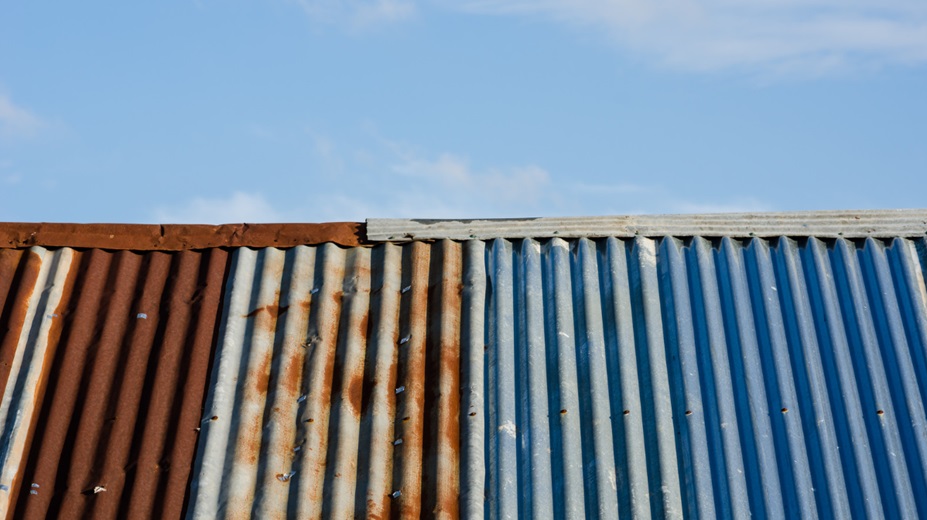
Common Types of Weather Damage on Metal Roofs
Metal roofing is known for its durability and longevity, making it a popular choice for homeowners, especially in areas prone to extreme weather conditions. However, metal roofing can still be susceptible to various types of weather damage despite its strength. Ensuring your metal roofing in Atlanta is properly installed and maintained is crucial to protecting your home. Metal roofs are highly resilient but can face challenges from hail, high winds, and even heavy rain. Understanding the common types of weather damage can help you take preventive measures and avoid costly repairs.
Hail Damage on Metal Roofs
Hailstorms can be particularly damaging to metal roofs, as the impact of large hailstones can cause dents and cracks. While metal roofing materials are generally designed to withstand harsh conditions, severe hail can still leave visible marks and reduce the aesthetic appeal of your roof.
Not all hail damage compromises the roof’s functionality, but large enough dents can affect the panels’ protective coating, leading to rust over time. To minimize the impact of hail damage, choosing a thicker gauge of metal for roofing is important, which can withstand more severe impacts. You can explore more about how hail affects metal roofs and ways to protect them in this guide.
Wind Damage and Loose Panels
High winds are another major concern for metal roofs, especially during storms or tornadoes. If the roofing panels are not secured properly, strong winds can lift them, causing roof sections to become loose or even detached. While metal roofs are designed to resist strong winds, improper installation or aging materials can increase their vulnerability.
To avoid wind damage, regular inspections are crucial to check for any loose fasteners or weakened areas. Ensuring your metal roof is well-maintained can help it withstand powerful gusts and prevent structural damage. For more insights into the longevity and durability of metal roofs, you can refer to this article, which covers important maintenance tips for extending the life of a metal roof.
Water Damage and Corrosion
Metal roofs are typically resistant to water, but they are not entirely immune to damage from heavy rain or moisture accumulation. When water pools on the surface due to improper drainage or clogged gutters, it can lead to rust and corrosion over time, especially if the protective coating on the metal has been compromised. This can be especially concerning in humid or rainy climates, where constant moisture exposure accelerates the process.
To prevent water damage, it’s important to ensure that your roof’s drainage system functions properly. Clearing debris from gutters and ensuring proper sloping will help water flow off the roof effectively. Regular maintenance and touch-ups on protective coatings can safeguard your metal roof against corrosion.
Thermal Expansion and Contraction
Metal naturally expands and contracts in response to temperature changes, and while this is expected, extreme fluctuations can cause stress on the roof. Over time, this thermal movement can loosen fasteners and create gaps between panels, making the roof more susceptible to water leaks and wind damage.
Fortunately, most modern metal roofs are designed with this in mind, using fasteners and materials that allow flexibility. However, regular inspections are essential to identify any signs of wear and tear caused by thermal expansion, especially after long periods of hot weather followed by cooling.
UV Damage from Sun Exposure
Although metal roofs are highly reflective and can withstand prolonged sun exposure better than other materials, constant exposure to ultraviolet (UV) rays can eventually wear down the paint and protective coatings. Fading, chalking, or peeling of the surface paint may occur after years of direct sunlight, which can affect both the appearance and longevity of the roof.
UV damage is more cosmetic than structural, but maintaining the roof’s protective layer through regular maintenance can help avoid further degradation. Applying a UV-resistant coating to the roof can also extend its lifespan and keep it looking newer for longer.
Conclusion
While metal roofs are known for their strength and longevity, they are still susceptible to various forms of weather damage, including hail, wind, water, and UV exposure. Regular inspections and maintenance are key to ensuring that your metal roofing remains in good condition and can stand up to the elements. By staying proactive, homeowners can extend the life of their metal roofs and protect their homes from costly repairs.
